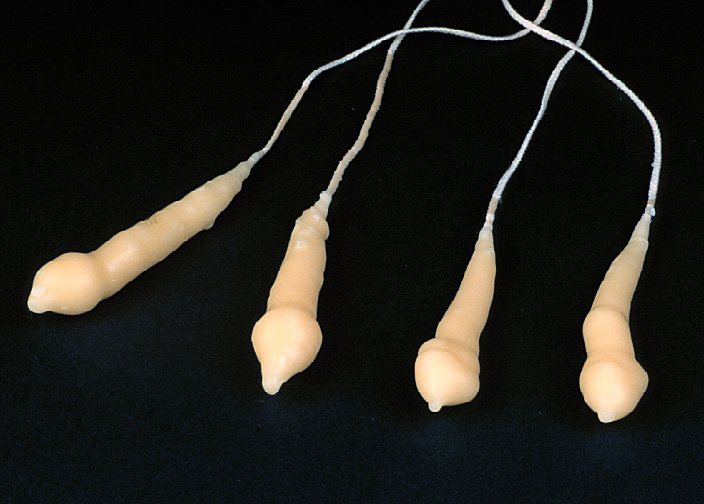
by Natasha Baker '01, Laura Brandt '01, and Carole Zakrewski '00

Candles were first mentioned in Biblical times, as early as the tenth century BCE. These early candles were made of wicks stuck into containers filled with a flammable material.
The first dipped candles were made by the Romans from rendered animal fat called tallow. Since tallow is cheap and easily available, tallow candles were the most widely used types of candles for centuries.
In the 1500's, beeswax was introduced as an alternative to tallow. Beeswax candles burn brighter and longer with less smoke, and they smell better than tallow candles. However, beeswax was more difficult to obtain, which meant that beeswax candles were used almost exclusively by the upper classes and the Church in Europe during this time. All candles were made by dipping until the 1400's, when a French inventor introduced molds for taper candles.
Other materials which have been used for candles more recently include spermaceti, a waxy material obtained from the sperm whale, paraffin, which is made from coal and oil shales, and bayberry wax, which is a residue left from boiling huge quantities of bayberries. Wicking can be made from almost any kind of fiber; one of the most common in early days was loosely spun cotton.